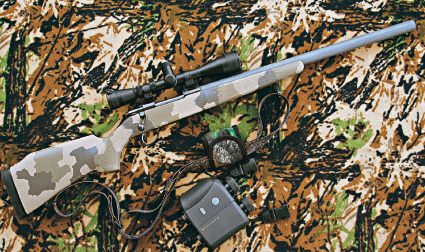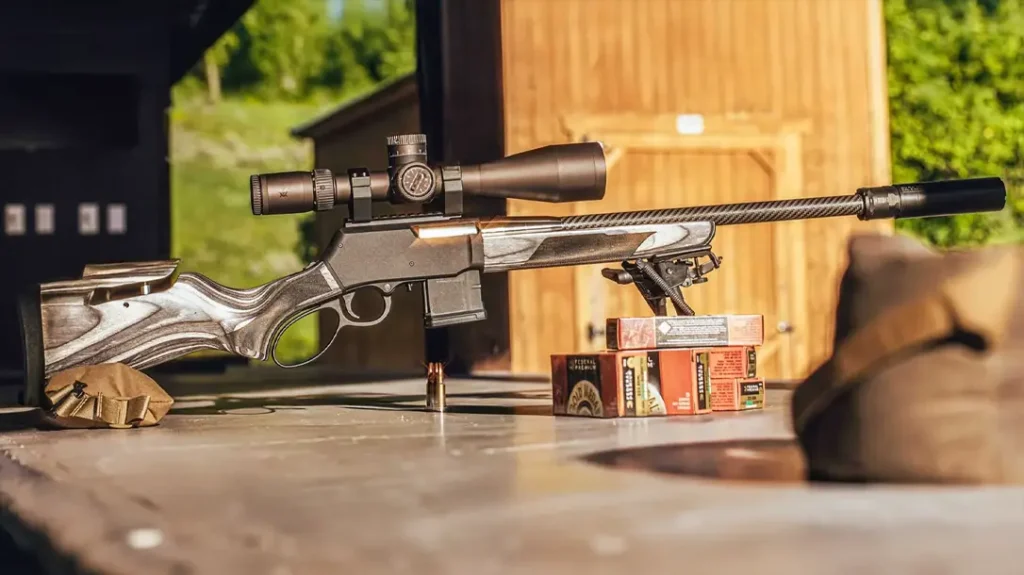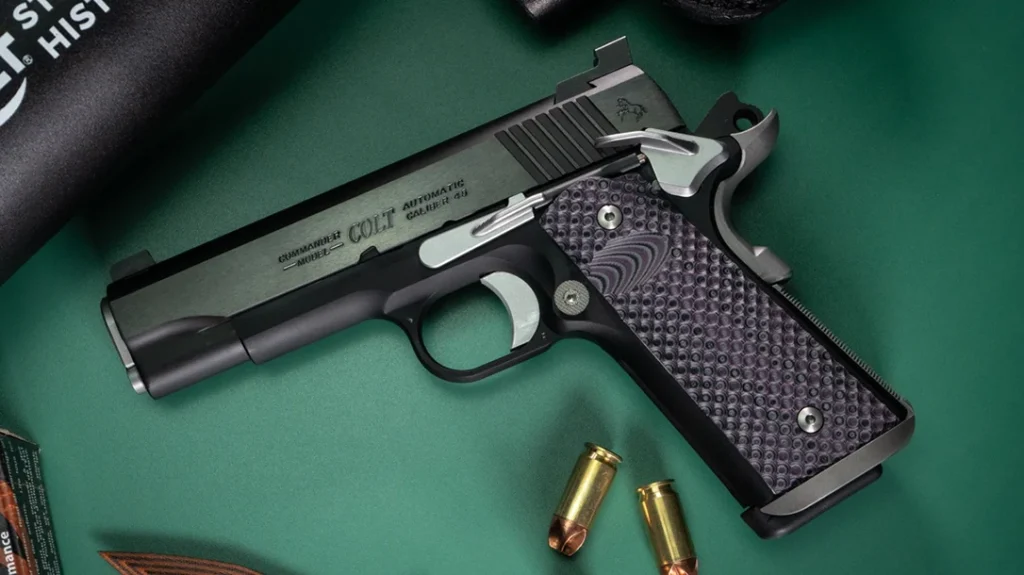While with good reason the Remington M700 and .308 cartridge dominate the tactical precision rifle world, the combination isn’t without a few weaknesses. Long regarded as being the best design as the basis for precision rifles, it has served long and well in that capacity.
 However, the .308 has its detractors, some legitimately so, some not. In truth, the reason for the .308’s widespread popularity as a tactical precision rifle cartridge isn’t what most people believe it to be. Actually, it didn’t become popular because it possessed exceptional accuracy or, as centerfire rifle cartridges go, is it especially powerful.
However, the .308 has its detractors, some legitimately so, some not. In truth, the reason for the .308’s widespread popularity as a tactical precision rifle cartridge isn’t what most people believe it to be. Actually, it didn’t become popular because it possessed exceptional accuracy or, as centerfire rifle cartridges go, is it especially powerful.
In the 600-yard stage of high-power competition, it has long been believed that the heavier bullets (168 to 175 grains) displayed better performance. The belief came from the fact that the original .30-06 had utilized a 173-grain bullet and had performed well during World War I as both a rifle and long-range machine gun cartridge.
Advertisement — Continue Reading Below
In actuality, it was more of an assumption than fact, which is the case with a great many beliefs within the shooting world. It was actually based upon the fact that the heavier bullets possessed a higher ballistic coefficient and would theoretically demonstrate better velocity and energy retention at longer ranges. And the technology to determine whether or not the belief was as true in the practical sense as it was in theory did not exist.
Within the last 15 years however, many high-power competitors have scrapped the heavy bullet concept and gone back to bullets of 150 to 155 grains, finding their performance at 600 yards to be far better than anyone previously thought. As long as the design included a boattail and long ogive, thus giving it a sufficiently high ballistic coefficient (though not as high as the heavier 168- or 175-grain BTHPs), longer-range performance was equal or superior to the heavier bullets.
Using a chronograph, computerized ballistic program and actual shooting drills to determine which bullet weights were best for the .308, I discovered that there was almost no difference in performance with the 150-, 168- and 175-grain boattail at ranges past 600 meters. And at closer ranges, the higher velocity and flatter trajectory of the 150-grainer actually made it a better choice.
Advertisement — Continue Reading Below
Let’s also remember that no .308 load has much punch left past 600 meters. Perhaps this is why the military has from the outset of its adoption, regarded its maximum effective range as 460 meters.
Am I anti-.308? No, not at all. But I think it’s important to understand that the real reason it became popular as a precision cartridge was simply that it was, first, availability. Two, thoroughly researched (even before it was adopted) and thus, it already had an extensive database. And three, the most powerful cartridge the average shooter could utilize for extended shooting sessions and not be negatively affected by the recoil it generates. In other words, the .308 has no magical capabilities that make it the perfect tactical precision cartridge.
As such, before the shooter arbitrarily selects it as a tactical precision rifle cartridge, he should first understand and determine the mission that he intended to use it. Past 600 meters, there are many cartridges that are superior to the .308 and even within that range, there are a plethora of other cartridges that equal or exceed its capabilities.
Advertisement — Continue Reading Below
It has also become popular to shorten the barrel on tactical precision rifles to make them handier in close quarters, but it must also be remembered that doing so also reduces muzzle velocity and subsequent ranging and terminal ballistic performance. Most 150-grain .308 loads generate about 2700 feet per second (fps), while the 168- and 175-grainers typical exit the muzzle at around 2600 fps.
I wanted a tactical precision rifle/cartridge combination that would be handy and produce good ranging and terminal ballistic performance out to 750 meters while generating light recoil, but quickly realized that especially with a 22-inch barrel, there are better choices than going with the .308 cartridge.
As a result, I decided to go with an improved version of the .260 Remington with the 100-grain Nosler ballistic tip boattail bullet. After an extensive research and development program, I figured that bullet, in fire-form Remington cases with a load of 50 grains of RL-19, and a Remington #9½ primer, would generate a bit over 3000 fps from a 22-inch barrel, range well and produce light recoil, but also produce good terminal ballistic performance out to 750 meters.
Advertisement — Continue Reading Below
Check out Ballistic’s Guide to Bullet Designs!
Gun Details
I opted for the SAKO L-579 Forester action, which has long been renowned for its quality and ruggedness. With a 22-inch sandblasted target-crowned stainless Shilen 1.05-inch heavy barrel, McMillan synthetic stock and Leupold bases, rings and scope, I felt a fine medium-range precision rifle package would emerge.
For a scope, I chose the Leupold Mark 4 PR 3-9x40mm tactical with duplex reticle, because it’s compact, light and highly user-friendly, yet it is also optically clear, sharp and robust. Inasmuch as the SAKO L-579 receiver has integral scope bases intended to utilize 30mm SAKO rings, I decided to have some Leupold tactical bases modified and the receiver drilled and tapped for them. The main tube of the Mark 4 PR scope is 25mm and I felt that insufficient rigidity would result if I used the plastic split-adapters that would allow me to use the factory 30mm rings.
Advertisement — Continue Reading Below
I also had my gunsmith glass-bed the action into the stock and free-float the barrel to insure maximum accuracy under the widest possible environmental conditions. A McMillan synthetic stock in desert camouflage was obtained and the package completed. The complete package weighs in at 11.8 pounds (about par for a good tactical precision rifle), is 41.75 inches overall and has a 2.5-pound trigger pull.
Range Time
On my first trip to the range, I tried no less than 25 different loads, but found to my delight that the initial load I had created via extrapolation was the best. At just under 5000 feet and 70 degrees Fahrenheit, five-shots through my Oehler M35P chronograph produced an average of 3035 fps with only a 35 fps extreme spread. I was delighted, to say the least.
After a quick preliminary zero at 25 meters to ensure I’d be on the target at 100 meters, I sandbagged the rifle solidly and went to work. Using a ½-MOA dot with circular scoring rings as my target, I shot a few three-shot groups to “settle the rifle in,” cleaned the barrel, then (despite the fact the barrel wasn’t yet fully broken in) shot a three-shot group that measured only 0.19 of an inch. I then moved the target out to 200 meters and on a 1-MOA dot target, fired a five-shot group that measured only 0.49 of an inch. Yep. It shoots really well!
Advertisement — Continue Reading Below
Subsequent calibrations in 25-meter increments showed that in every respect, the .260Rem AI with a 100-grain Nosler ballistic tip outperforms all three .308 loads (150-, 168- and 175-grain boattail bullets) by a substantial margin. Beginning at 400 meters, a comparison looks like this, using a tuned .308 FN-FAL sniper rifle with 21-inch barrel. From it, the 150-grain Nosler Ballistic Tip load produces 2525 fps and the 168- and 175-grain BTHPs produce 2425 fps at the muzzle.
Bear in mind that although it maintained its velocity better than any of the .308 loads, the .260Rem AI also produces considerably less recoil, making it more user-friendly when one must engage in sustained shooting sessions. In fact, I was so impressed with its performance that I opted to extend its maximum effective range from 750 to 800 meters, where it still produces 1301 fps.
On a 1/4-inch T-1 armor plate, the 100-grain Nosler Ballistic Tip penetrates out to a full 100 meters, while none of the .308s do much more than scratch the paint. On small- and medium-sized game animals, the 100-grain .260Rem AI is also very effective, putting down most critters with a single shot most of the time, even at ranges past 500 meters.
Advertisement — Continue Reading Below
Final Notes
It’s clear that the combination of the highly efficient .260Rem Ackley Improved cartridge in this particular load/rifle combination is a fine medium-range precision rig. Accuracy is absolutely first-rate, yet it isn’t too heavy or bulky to make it clumsy to handle or store in tight spaces. With the Leupold Mark 4 PR or other similar Leupold tactical scope, it can easily be calibrated in 25-yard/meter increments and give its operator fine performance in all respects.
So if you’re thinking about building a tactical precision rifle chambered for something other than the .308, give the .260Rem AI some serious thought. Although the regular .260Rem is gaining a great reputation as a long-range cartridge, the Ackley Improved version is even more efficient and, with a properly conceived load, superbly accurate. In conjunction with a fine bolt-action like the SAKO L-579 Forester and the appropriate Leupold tactical scope, it makes a tough package to beat.























